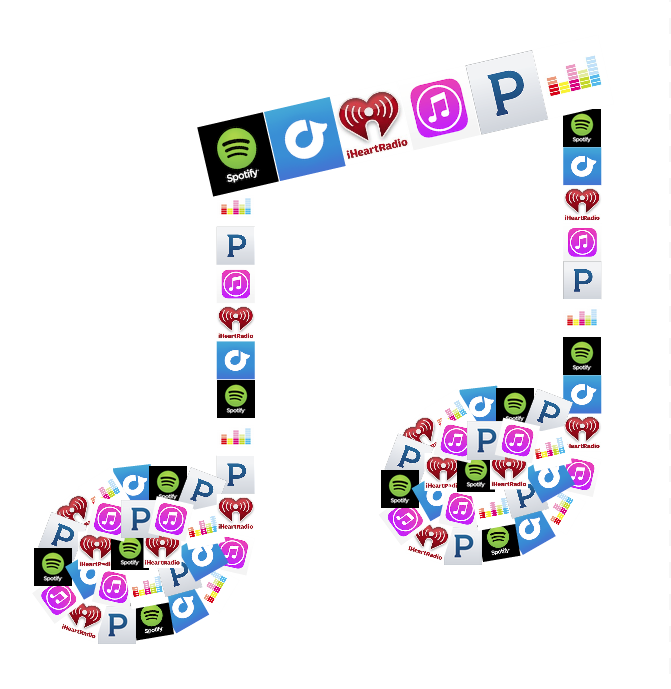Luis Fonsi, Daddy Yankee and Justin Bieber broke records with “Despacito” when it reached a combined 4.6 billion streams in a matter of 6 months. Previously, this position was also held by a Bieber hit, “Sorry”, at just around 4.4 billion streams. Music fans everywhere are well aware; long gone are the days of purchasing entire physical albums just to hear 1 or 2 hit songs. Even so, individual records are no longer necessarily purchased as MP3 files; they are streamed through a subscription-based platform.
The evolution of music consumption has developed fairly quickly over the last few decades. From the first portable music system- the casette-playing walkman by Sony in the late 70’s, to the first iPod of the early 2000’s, consumers went from purchasing cassettes, to CDs, to paying for individual MP3s. Fast forward to 2017, and we have today’s streaming services, which allow consumers to play music without downloading individual files. Among some of the streaming giants, (based on number of subscribers) are Apple, Tidal, Spotify, Pandora, each with its unique offerings. In an era when music has become so accessible and easy to download (whether by paying for individual MP3s, or illegally torrenting a free version), the average music fans’ preferred listening method is nonetheless streaming. Streaming rids of the hassles with data storage, offers personalization, and allows the convenience of seamlessly changing between artists and genres. But might this new music-listening method have detrimental effects on the music industry?
Some music fans are concerned that the increase in quantity of tracks, will compromise the quality of releases, but this is not necessarily true. The digitization of the music industry has had a significant impact on the quantity of music released – since we are in a single-driven music economy, more artists are experimenting, as the pressures of releasing a single record are far less than those of perfecting an entire album. This novel format of music allows for independent and indie artists, especially on platforms such as SoundCloud, to create and share their own sound, independent of a label’s backing.
Unsurprisingly, purchased MP3 downloads and CD sales have continually declined over the last several years, by as much as 20% annually. The last fruitful year (in terms of revenue) for the music industry was 1999, the same year Napster was established. Since then, revenue numbers for record labels have steadily declined, until streaming became popularized in 2016. Now, with over 100 million subscribers across streaming platforms, it has been a notably beneficial venture for the record companies- though not traditionally (through sales), but through a percentage of the streaming subscriptions and advertisements on their artists’ records.
Various experts would claim streaming “saved” the industry. Whether this is true or not is relative – your opinion might depend on if you are the artist, the label executive, or the consumer. Undeniably, streaming has changed the music worlds in a few key ways. The focus of creating hit singles rather than albums, the revenue model, and the consumer satisfaction are all new introductions with the digitization of the listening experience.


